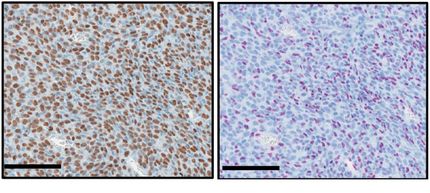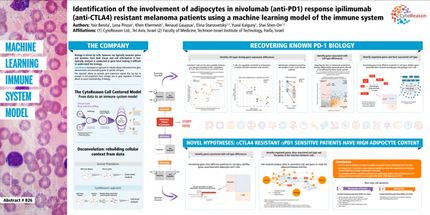Roving ‘Sonic hedgehog’ gene may change scientists’ understanding of limb growth
Sonic hedgehog, a gene that plays a crucial rule in the positioning and growth of limbs, fingers and toes, has been confirmed in an unexpected place in the embryos of developing mice — the layer of cells that creates the skin. Named for a video game character, Sonic hedgehog describes both a gene and the protein it produces in the body. Its study is important to increase understanding of human birth defects.
It was thought to be exclusively present in the cell layer that builds bone and muscle, called the mesoderm. But University of Florida Genetics Institute researchers have discovered that Sonic hedgehog is also at work in mice limb buds in what is known as the ectoderm, the cell layer that gives rise to the skin in vertebrates.
Finding Sonic hedgehog in this layer of cells is loosely akin to discovering that yeast has crept from the batter to the frosting, where it has the surprising effect of limiting how much the cake will rise. More literally, instead of causing appendages to grow, Sonic hedgehog seems to act as a failsafe mechanism to keep additional digits from developing.
“Sonic hedgehog protein determines how your limbs form, and why your pinky is at the bottom of your hand and your thumb is at the top,” said Brian D. Harfe, Ph.D., an associate professor of molecular genetics and microbiology at the UF College of Medicine. “But what’s been previously published is only part of the picture. We determined that Sonic hedgehog signaling is required in the ectoderm to have normal digit formation. Get rid of it, and an extra digit forms.”
In this case, when scientists disrupted Sonic hedgehog signaling in a small region of the limb buds of embryonic mice, an additional digit began to arise in what would be the mouse paw.
The discovery, to appear in Proceedings of the National Academy of Sciences, suggests that Sonic hedgehog’s role in the growth of appendages is far more complex than originally thought. Developmental biologists may have to rethink established theories about how limbs are patterned in vertebrates — an effort that could provide insight into human birth defects.
“We used technology where a viral protein seeks out specific sequences of DNA,” said Cortney M. Bouldin, a graduate student in the Interdisciplinary Program in Biomedical Sciences in the department of molecular genetics and microbiology. “We concentrated on disabling a protein essential for Sonic hedgehog signaling. Although it has been removed from the limb before, we wanted to specifically remove it from the ectoderm. When we did that, in the latter stages of development, we saw extra cartilage and the early beginnings of another digit.”
Sonic hedgehog signaling in the ectoderm of limb buds may act as a buffering system that prevents unneeded growth, Bouldin said.
The UF research was sparked by studies of gene activity in the limb buds of mice by William J. Scott, D.V.M., Ph.D., a professor of pediatrics at the University of Cincinnati. Scott used a microarray experiment to examine gene expression levels in the ectoderm of mice limb buds, finding activity that could not be possible without the presence of Sonic hedgehog.
UF researchers were able to advance this investigation from cell studies to developing mice embryos by knocking out gene expression in a small region of the ectodermal layer. It allowed them to observe early limb development in the absence of Sonic hedgehog signaling.
“The view had been if you reduce signaling, if anything you would get fewer fingers,” said Scott, who did not participate in the UF research. “We now know we can’t disregard Sonic hedgehog signaling in the ectoderm. It still has its predominant effect in the tissue where it is made, but it does something more than we thought it did previously. When we try to understand problems that arise with limb growth in humans, we will be able to examine those possibilities.”
Harfe said the next phase of the work will be to observe what happens when Sonic hedgehog signaling is disrupted through larger segments of the ectodermal layer. Ultimately, researchers hope the work will lead to quality of life improvements for people.
Most read news
Topics
Organizations
Other news from the department science

Get the life science industry in your inbox
By submitting this form you agree that LUMITOS AG will send you the newsletter(s) selected above by email. Your data will not be passed on to third parties. Your data will be stored and processed in accordance with our data protection regulations. LUMITOS may contact you by email for the purpose of advertising or market and opinion surveys. You can revoke your consent at any time without giving reasons to LUMITOS AG, Ernst-Augustin-Str. 2, 12489 Berlin, Germany or by e-mail at revoke@lumitos.com with effect for the future. In addition, each email contains a link to unsubscribe from the corresponding newsletter.
Most read news
More news from our other portals
Last viewed contents
The Genetics Company: Issuance of European Patents covering fundamental technologies in computational chemistry.
High-Tech Gründerfonds launches HTGF Academy for its startup portfolio - Tailored to the needs of startups
Micromet's Blinatumomab Induces Durable Remissions in Patients with Relapsed Non- Hodgkin's Lymphoma
Raynaud's_disease























































